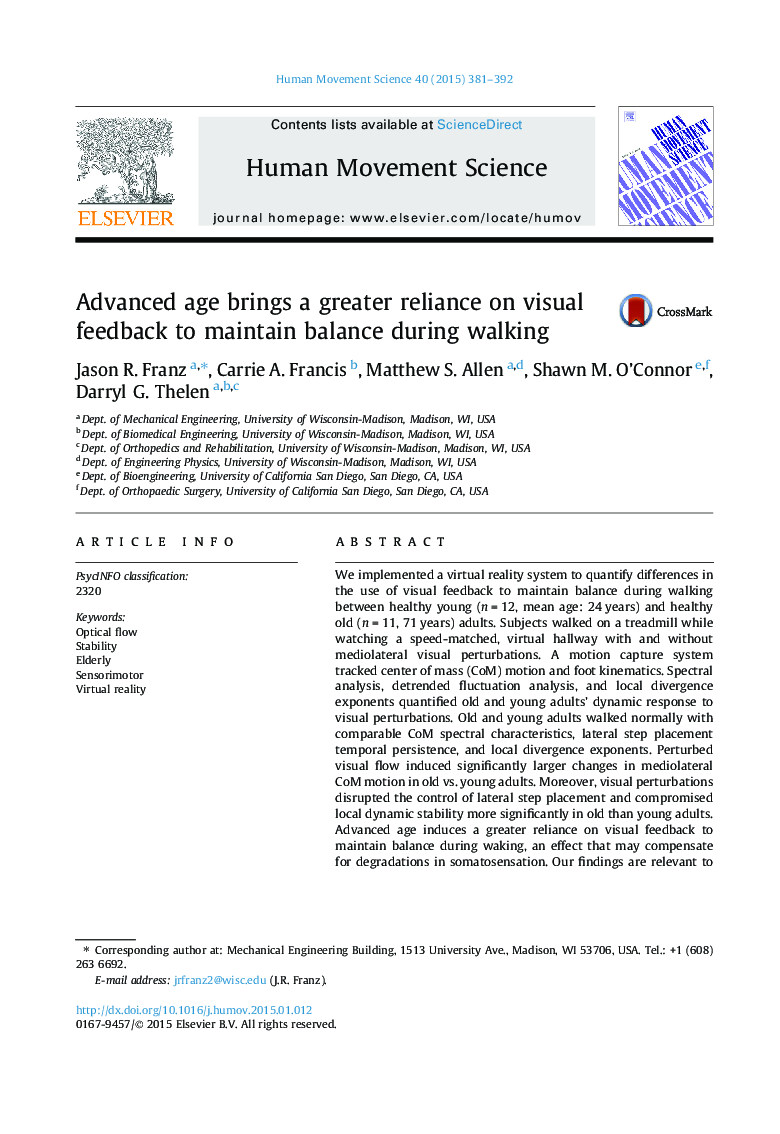| Article ID | Journal | Published Year | Pages | File Type |
|---|---|---|---|---|
| 7292185 | Human Movement Science | 2015 | 12 Pages |
Abstract
We implemented a virtual reality system to quantify differences in the use of visual feedback to maintain balance during walking between healthy young (n = 12, mean age: 24 years) and healthy old (n = 11, 71 years) adults. Subjects walked on a treadmill while watching a speed-matched, virtual hallway with and without mediolateral visual perturbations. A motion capture system tracked center of mass (CoM) motion and foot kinematics. Spectral analysis, detrended fluctuation analysis, and local divergence exponents quantified old and young adults' dynamic response to visual perturbations. Old and young adults walked normally with comparable CoM spectral characteristics, lateral step placement temporal persistence, and local divergence exponents. Perturbed visual flow induced significantly larger changes in mediolateral CoM motion in old vs. young adults. Moreover, visual perturbations disrupted the control of lateral step placement and compromised local dynamic stability more significantly in old than young adults. Advanced age induces a greater reliance on visual feedback to maintain balance during waking, an effect that may compensate for degradations in somatosensation. Our findings are relevant to the early diagnosis of sensory-induced balance impairments and also point to the potential use of virtual reality to evaluate sensory rehabilitation and balance training programs for old adults.
Related Topics
Life Sciences
Neuroscience
Cognitive Neuroscience
Authors
Jason R. Franz, Carrie A. Francis, Matthew S. Allen, Shawn M. O'Connor, Darryl G. Thelen,
